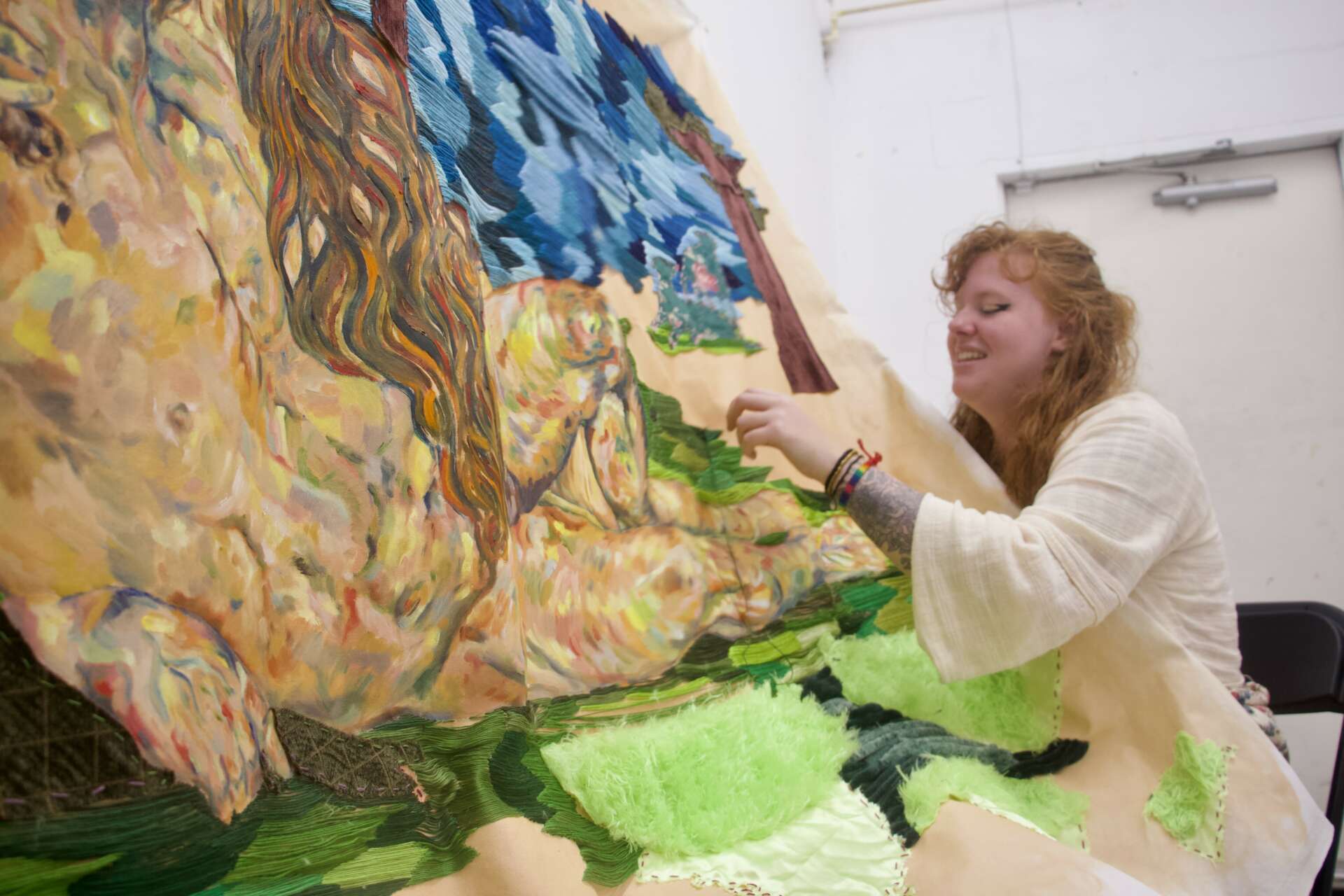We caught up with the brilliant and insightful Cari Beattie a few weeks ago and have shared our conversation below.
Cari, looking forward to hearing all of your stories today. We’d love to hear about a project that you’ve worked on that’s meant a lot to you.
One of my more recent paintings, “You Should Smile More,” has been a significant addition to my portfolio. This piece started right before my final year at Ringling College of Art and Design and now has become the foundation of my Fine Arts thesis. The concept occurred through a myriad of sketches of myself with a moss creature. I used this entity to represent the male gaze; society’s idea of what a man finds attractive in a woman through an objectifying lens.
In my own experience there has always been this pervasive feeling of being watched, unable to feel like I am existing for myself. Universally, women know the sensation of a leeching presence that prevents you from having a sense of safety or sanity. I implemented hand-embroidery in small sections of the moss creature to further communicate the ever-present monster that slowly eats away at every woman. This artwork helps give a body to these emotions so that they can be comprehended and processed.
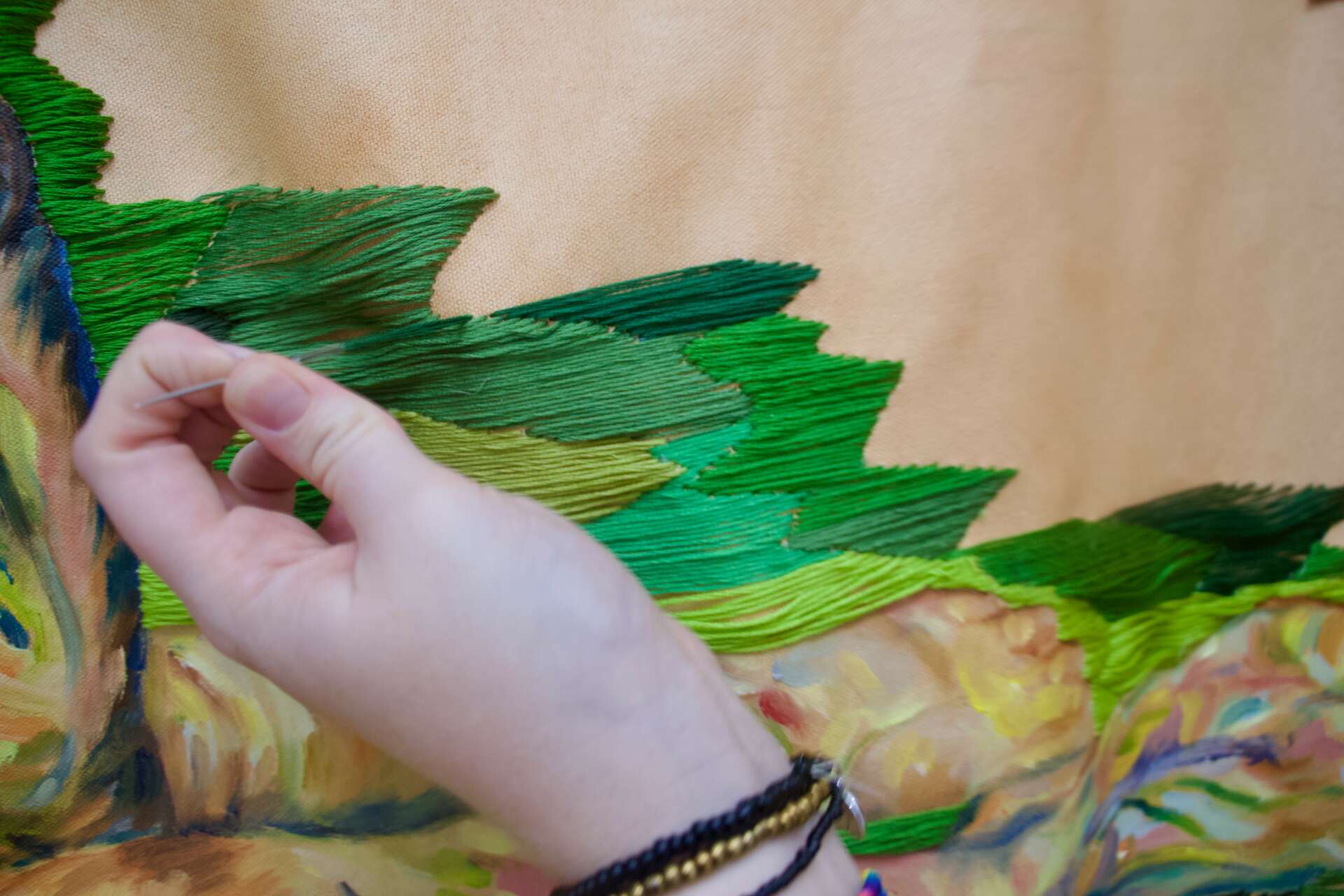
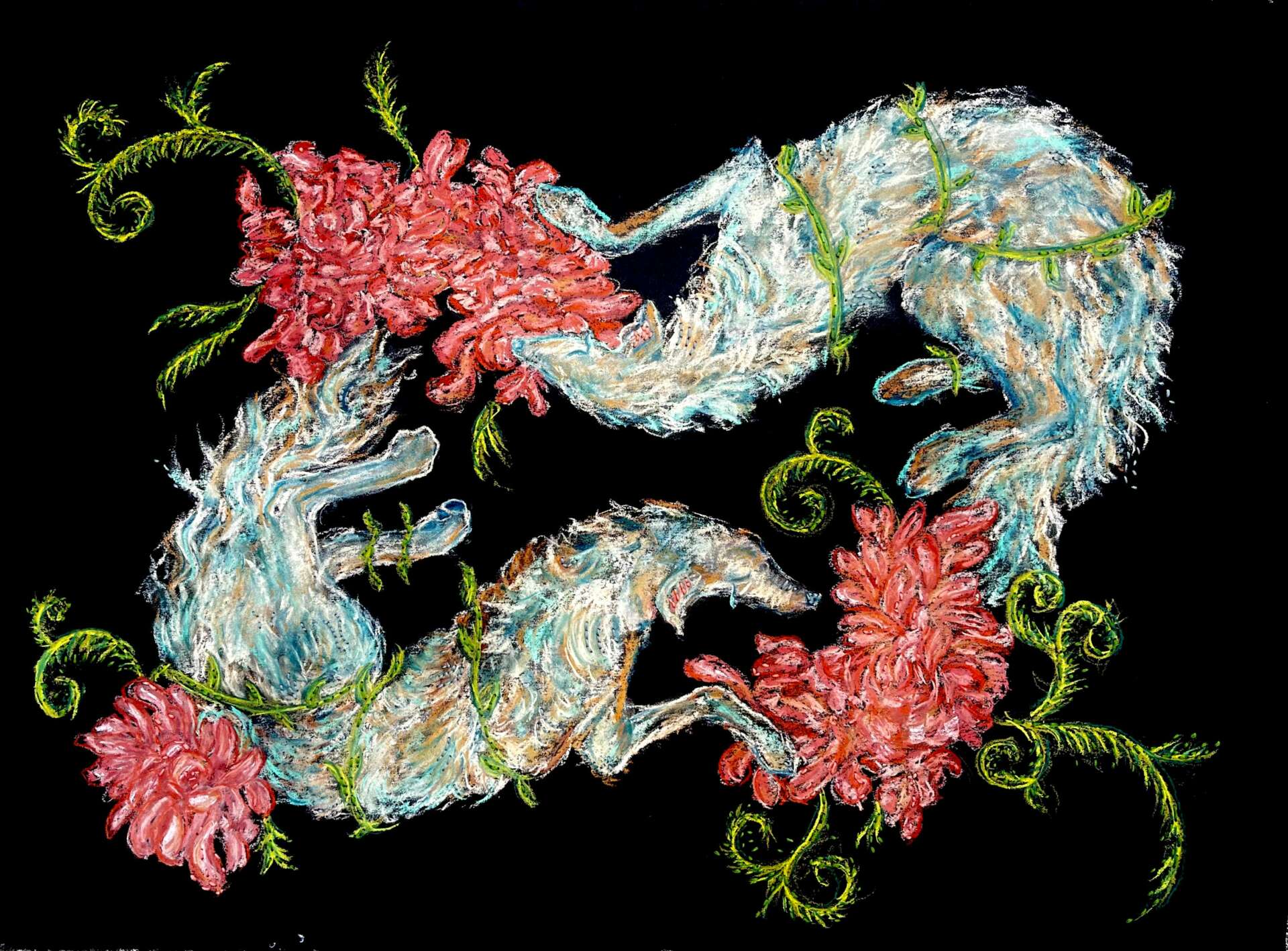
Cari, before we move on to more of these sorts of questions, can you take some time to bring our readers up to speed on you and what you do?
Most professional artists claim that life without creating is insufferable, leading them to the inevitable journey of self-exploration in their studio practice. My first encounter with this feeling began as a child as I witnessed my mother sewing for hours on end with extreme love and dedication. During this time I learned to hand-stitch. This experience in combination with my mother’s passion had a lasting impact. My parents had me try out a myriad of skills such as ice skating, swimming, violin, cello, and painting. Inevitably, creating art stuck with me and I now see it as my only way to live.
As an adult I have been given the privilege to study at Ringling College of Art & Design and learn how to integrate old and new skills. Elements of hand-embroidery are hidden within my oil paintings; this process acts as a form of anxiety relief and a demonstration of discipline. Through the process of collaging fabrics and threads into quilt-like paintings, I am able to hone in on a meditative practice. I paint in thin layers to slowly build up thick textures and use saturated colors to emphasize the intensity of the scenarios portrayed. Historically, the time and dedication that women have put into textiles has been taken for granted. I aim to honor these skills and traditions of fiber arts that I have witnessed my mom perform her whole life.
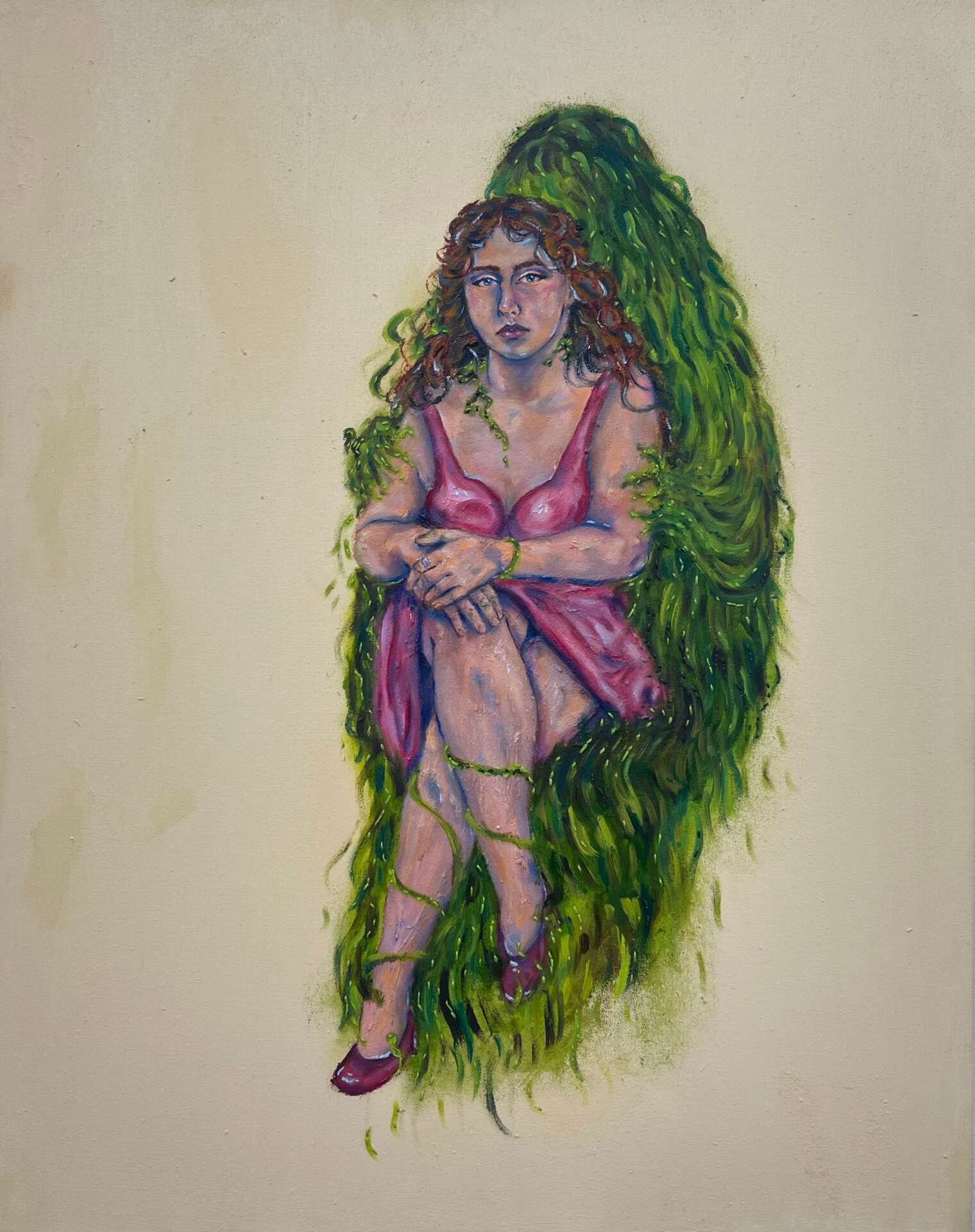
For you, what’s the most rewarding aspect of being a creative?
Growing up I was an only child, often alone and felt deeply disconnected from myself and reality. When I started college, almost immediately I formed a group of friends in Fine Arts who would support me throughout the rest of my experience at Ringling. This was transformative in the way I worked as an artist and in everyday life. Whenever I am in a rut and don’t know what to do with my artwork, just a few steps away are my peers ready to give honest feedback.
It is essential to maintain strong group relationships in order to thrive as a creative. I remember my first time walking through the Fine Arts studios at Ringling and was completely blown away. What an honor that was; it felt like I had access to the inside of all these peoples’ brains and their most intimate and vulnerable selves.
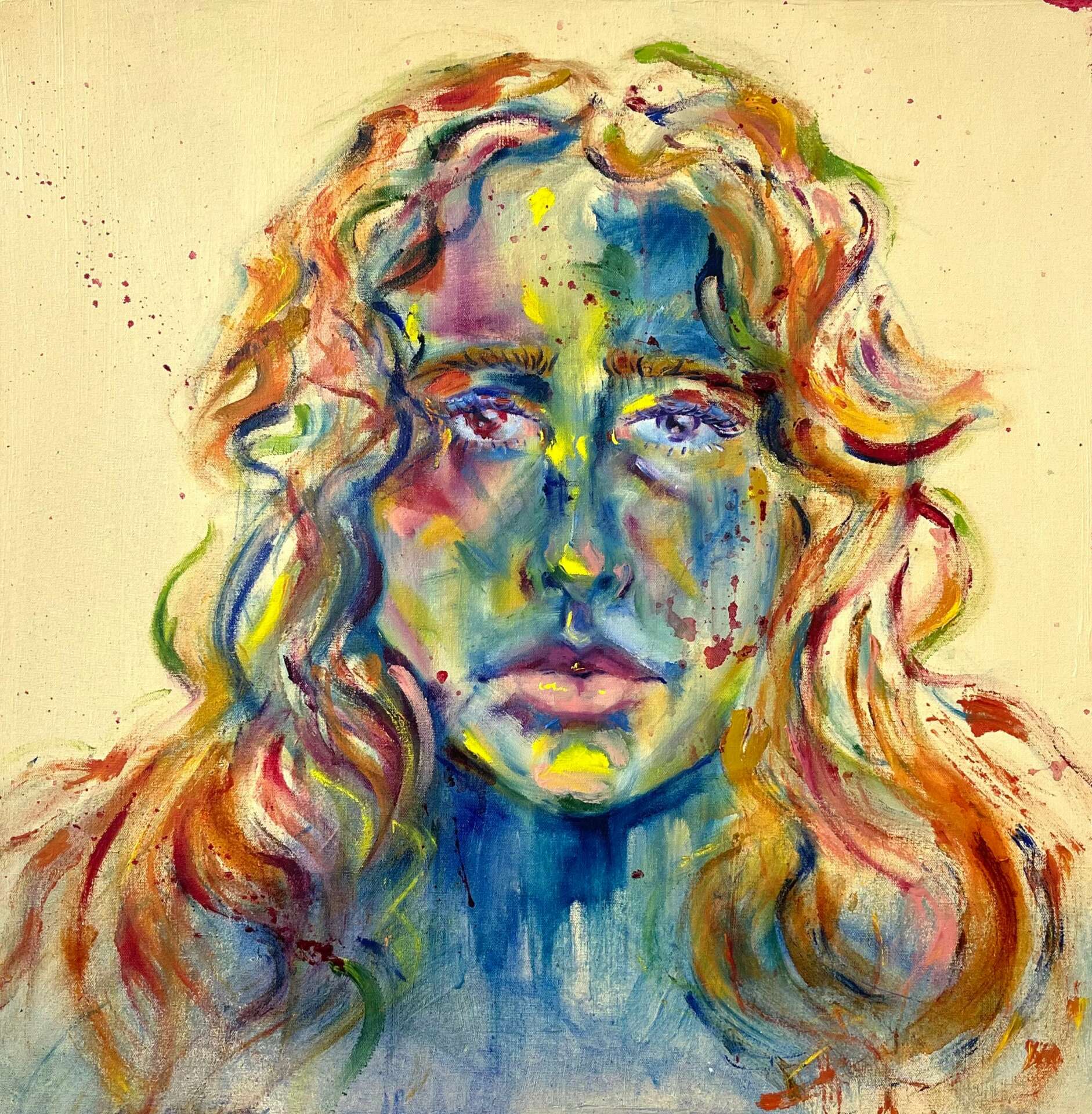
We often hear about learning lessons – but just as important is unlearning lessons. Have you ever had to unlearn a lesson?
There is the stereotype that good artists are people with natural talent and that inspiration just suddenly hits them. In reality, this profession requires immense time and effort to truly flourish. My professors have reiterated this point for years, but only after years of trial and error have I been able to comprehend the weight of their wisdom. This has provided me with the motivation to maintain self-discipline and dedication in my art.

Contact Info:
- Instagram: https://www.instagram.com/caribeattie/
Image Credits
Nancy Nassiff and Christina Antoniou


